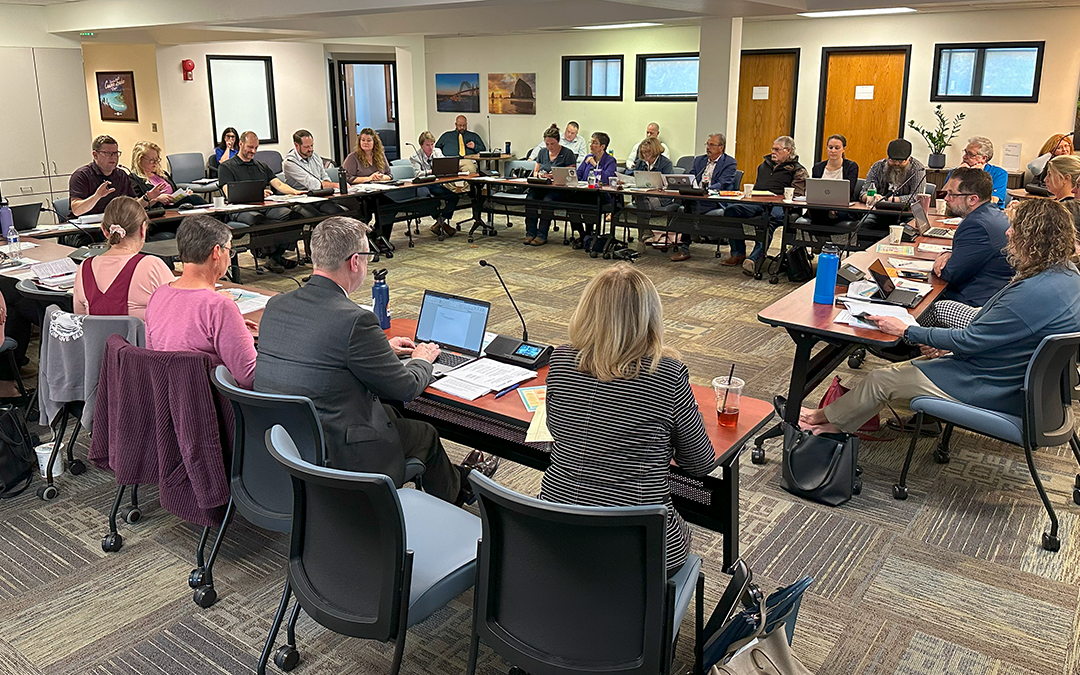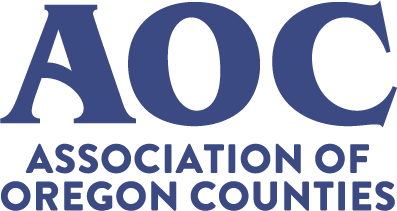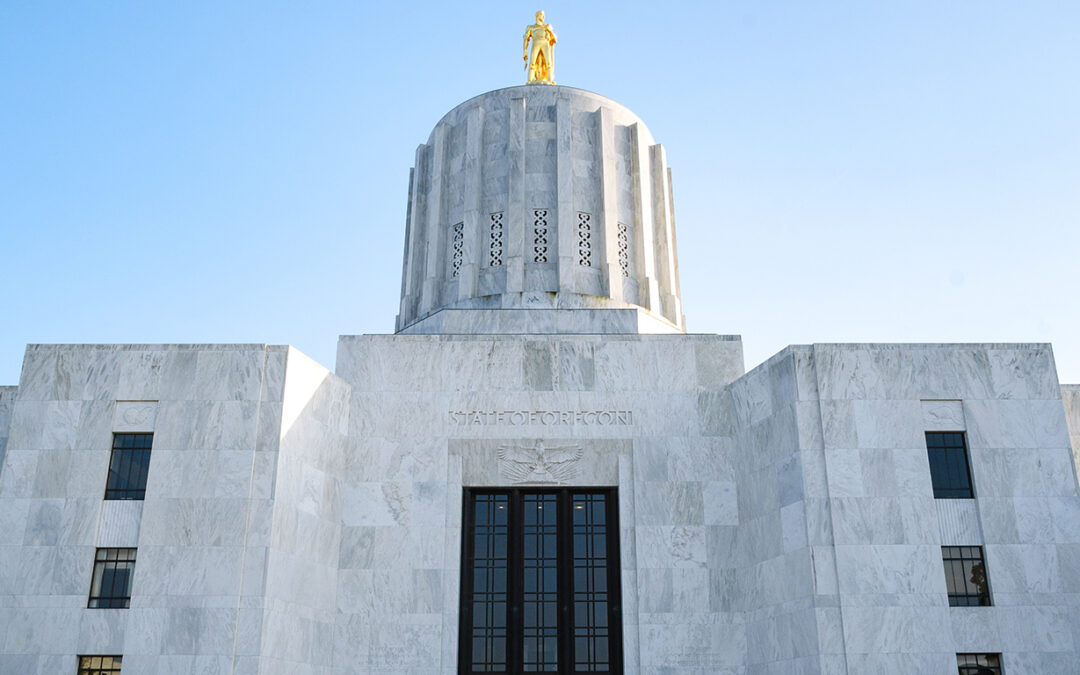
Mar 26, 2024 | AOC Advocacy, Health & Human Services
Addressing Oregon’s opioid crisis and reforming Ballot Measure 110 were among top priorities for legislators during the 2024 short session. HB 4002 and its companion funding bill, HB 5204, passed the legislature overwhelmingly with bipartisan, bicameral support, instituting a variety of new programs and policies. Among those new programs is the Oregon Behavioral Health Deflection Program, established at the Criminal Justice Commission (CJC) to coincide with the newly created misdemeanor for possession of a controlled substance.
The new misdemeanor, coupled with the deflection program, is intended to re-establish local partnerships between law enforcement and the behavioral health safety net to effectively connect individuals to treatment and recovery while minimizing costly interactions with the justice system.
Twenty-three Oregon counties opted in to receive fast-tracked funding to stand up deflection programs. These counties are encouraged to establish their deflection programs quickly in preparation of the new misdemeanor’s effective date of Sept. 1. Initial funds may also be used as planning grants for counties needing time to explore programmatic options. The legislature also allocated funding through the end of the current biennium to support the coordination and case management of deflection program participants in each county and federally recognized Oregon tribe, which means every interested county government still has the opportunity to draw down their formula funding to set up a program.
The Association of Oregon Counties (AOC) was successful in advocating for maximum flexibility in how a local deflection program is administered and operated, allowing the required local partners (law enforcement, the district attorney, county government, the Community Mental Health Program, and a Behavioral Health Network provider) to make the best use of their existing resources and processes.
Over 150 county leaders attended AOC’s first deflection program summit on March 18, designed to help county commissioners and local partners understand the CJC’s program requirements and timeline, as well as equipping county leaders to begin formulating their local implementation plans. The summit’s plenary and regional break-out session recordings and materials are available in the AOC archive.
AOC will continue to convene the CJC, county commissioners, and local deflection partners through the summer and fall to assist in program planning and implementation. Please contact jpratt@oregoncounties.org or jlewis-goff@oregoncounties.org to receive those meeting notifications.
Contributed by: Legislative Affairs Managers Jessica Pratt and Jen Lewis-Goff

Mar 26, 2024 | AOC Advocacy, AOC News, Transportation
Until the passage of Senate Bill 1566 during the 2024 short session, Oregon law prohibited counties from charging fees for permits issued to water, gas, electric, and communications utilities for construction, repair, or maintenance work in the county right of way.
The statutory preemption on permit fees meant that precious State Highway Fund dollars intended for county road improvements and maintenance were instead subsidizing public and private utility operations. The Association of Oregon Counties (AOC) and the Oregon Association of County Engineers and Surveyors (OACES) have prioritized the lifting of this preemption through legislative action for several legislative sessions.
The concept was introduced as SB 635 in the 2023 session, and AOC participated in a months-long work group with utilities that was ultimately fruitless. Before the end of the 2023 session, AOC successfully advocated for an interim committee work group sanctioned by the Joint Committee on Transportation. That workgroup was led by committee co-chair Sen. Chris Gorsek and committee member Sen. Lynn Findley. Five county representatives participated in several meetings around the state during the interim and negotiated the language that became SB 1566, which was introduced as one of the Joint Committee on Transportation’s three short session bills. AOC and counties are grateful to staff and commissioners from Multnomah, Polk, Union, Jefferson, and Lincoln counties and the leadership and dedication from Sens. Gorsek and Findley, without whom SB 1566 would not have passed.
SB 1566 removes the preemption in ORS 758.010 and allows counties to charge cost-recovery fees for permits issued to the utilities that could previously operate in the county right of way free of charge. The language includes negotiated permit fee exemptions for vegetation management, routine maintenance, and emergencies. Completed fee-eligible permits must be approved or denied by the county within 15 days. SB 1566 sunsets in 2031, so the legislature will have to review and renew the authority it provides to counties in a future session.
SB 1566 is permissive — if a county wishes to pursue the fee structure the bill authorizes, it must pass an ordinance. SB 1566 contains language that allows a county to begin ordinance development immediately, and includes an emergency clause so it will be in effect upon the governor’s signature. AOC and OACES will create opportunities to collaborate on ordinance development and track the efficacy of this new authority over the next five years.
Contributed by: Legislative Affairs Director Mallorie Roberts

Mar 26, 2024 | AOC Advocacy, AOC News, Governance, Revenue, & Economic Development
Following House Bill 3414’s failure during the 2023 session, the prospect of the Association of Oregon Counties (AOC)’s community development policy priority — creating a fast-track process for limited urban growth boundary (UGB) expansions that significantly increase affordable and workforce housing in all communities experiencing shortages of buildable land — looked grim. However, immediately following the 2023 session, Governor Kotek and her policy advisors convened a small group of individuals, including AOC staff, to conduct a series of work sessions. Their aim was to revisit the policy items in HB 3414 and craft a bill to address Oregon’s housing supply crisis that could pass in the 2024 session.
After numerous meetings with the governor’s office, AOC staff and county planning department directors provided input and technical assistance on proposed legislation to ensure cities and counties would be able to implement the legislation if enacted. In consideration of the pending legislative concept, the AOC Transportation and Community Development Steering Committee recommended that AOC readopt our 2023 UGB-related priority as a top priority for the 2024 session.
Senate Bill 1537, the Emergency Housing Stabilization and Production Package introduced by Gov. Kotek, was amended many times before eventually becoming law, with AOC actively involved at every stage of the process.
SB 1537 directly addresses AOC’s fast-tracked UGB expansion priority, establishing a one-time UGB expansion tool for cities that need both land supply and affordable housing. The bill requires 30% of all homes to be built as “affordable housing” and ensures the expansion aligns with the preferences and understanding of Oregonians – with a diverse array of housing choices, a mix of densities and services the residents will need, and the necessary infrastructure for long lasting, successful communities. SB 1537 requires the land to not be zoned high-value farm or forest outside of urban reserves already designated and caps the expansion at a specific number of acres based on population (100 net residential acres for cities with a population over 25,000 and a maximum of 50 net residential acres in cities with a population under 25,000; Metro is capped at 300 total net residential acres).
Cities are currently looking over the requirements that must be met to qualify for this fast-track process. With counties serving as a strong partner in this process, planning departments stand ready to work with our local government partners to begin this process when they are ready.
AOC looks forward to working with the Department of Land Conservation and Development, the governor’s office, and stakeholders throughout the state on the next area needed to address the housing supply issues Oregon continues to face.
Contributed by: Legislative Affairs Manager Branden Pursinger

Mar 25, 2024 | AOC Business Partner
Sponsored content contributed by AOC Business Partner: Nationwide
Nationwide provides complimentary education sessions through their Teaching Thursday Program designed to help you prepare for retirement. Check out the upcoming sessions below and register here.
Upcoming Teaching Thursday Sessions
April 11
Myths & Retirement: What are the ten biggest myths concerning retirement savings? This webinar reviews the truths about these myths to help you confidently plan for retirement.
April 25
Managing Taxes: Learn how taxes can impact retirement income plans: pre-tax, post-tax, and inherited.
May 9
Leaving Your Legacy: Learn how to take steps to make sure your assets pass to your family and loved ones. Learn how these steps can pass smoothly, in a tax-efficient manner.
May 23
Retirement 101: This webinar helps employees better understand how and why a 457b Deferred Comp plan helps meet their retirement goals.
June 6
My Interactive Retirement Planner (MIRP) & Online Resources: Learn about tools, like MIRP and other online resources designed to organize and track your retirement goals.
June 20
Retirement Payout Options: If you are within a few months or years from retirement, you will learn all about distribution options and required minimum distributions.
Contributed by: Member Services and Education Director Kristen Paul





